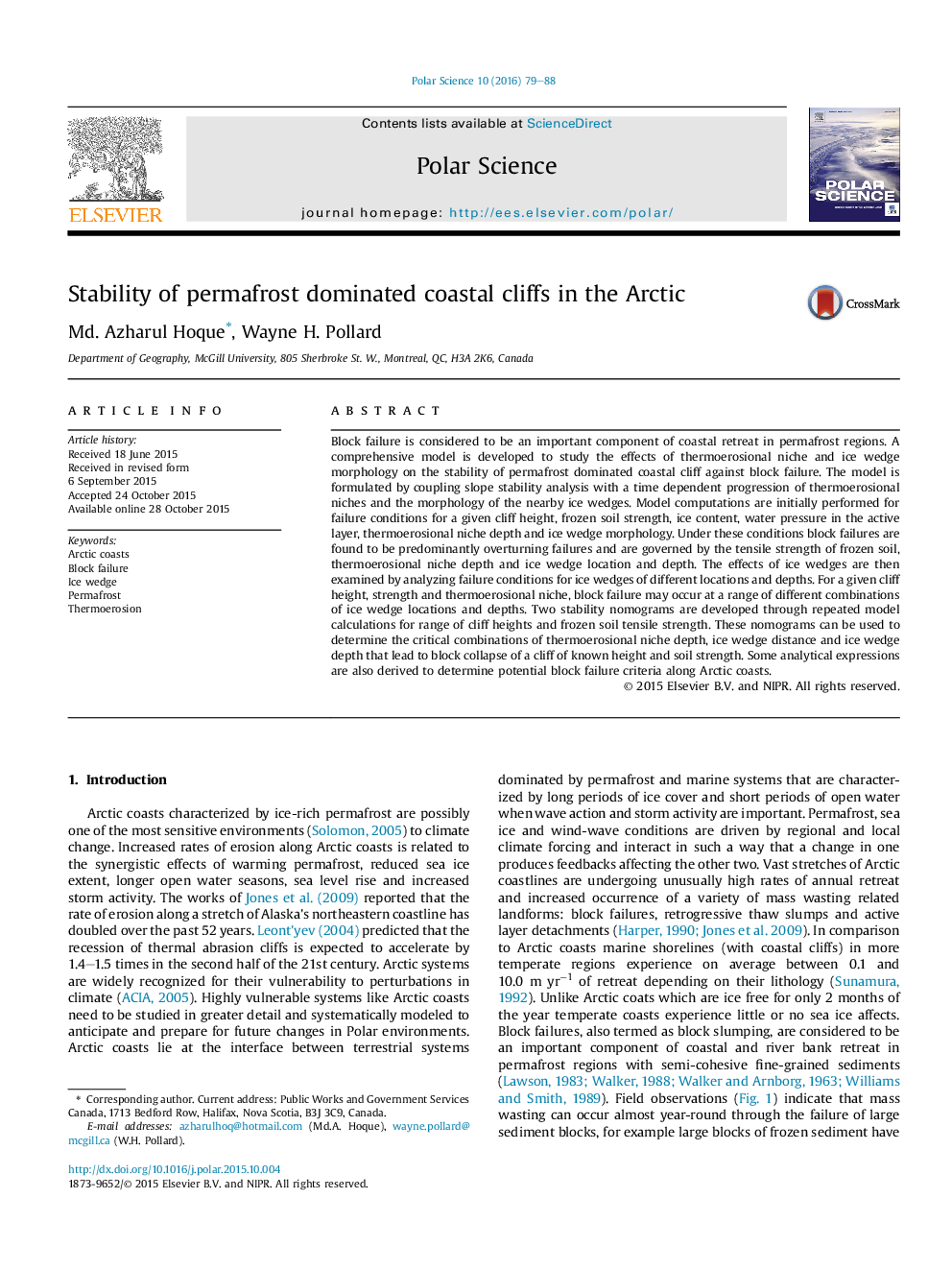| Article ID | Journal | Published Year | Pages | File Type |
|---|---|---|---|---|
| 4683192 | Polar Science | 2016 | 10 Pages |
Block failure is considered to be an important component of coastal retreat in permafrost regions. A comprehensive model is developed to study the effects of thermoerosional niche and ice wedge morphology on the stability of permafrost dominated coastal cliff against block failure. The model is formulated by coupling slope stability analysis with a time dependent progression of thermoerosional niches and the morphology of the nearby ice wedges. Model computations are initially performed for failure conditions for a given cliff height, frozen soil strength, ice content, water pressure in the active layer, thermoerosional niche depth and ice wedge morphology. Under these conditions block failures are found to be predominantly overturning failures and are governed by the tensile strength of frozen soil, thermoerosional niche depth and ice wedge location and depth. The effects of ice wedges are then examined by analyzing failure conditions for ice wedges of different locations and depths. For a given cliff height, strength and thermoerosional niche, block failure may occur at a range of different combinations of ice wedge locations and depths. Two stability nomograms are developed through repeated model calculations for range of cliff heights and frozen soil tensile strength. These nomograms can be used to determine the critical combinations of thermoerosional niche depth, ice wedge distance and ice wedge depth that lead to block collapse of a cliff of known height and soil strength. Some analytical expressions are also derived to determine potential block failure criteria along Arctic coasts.
